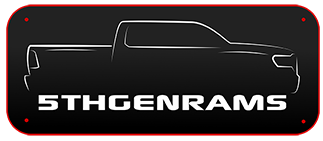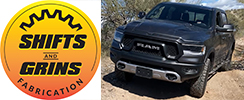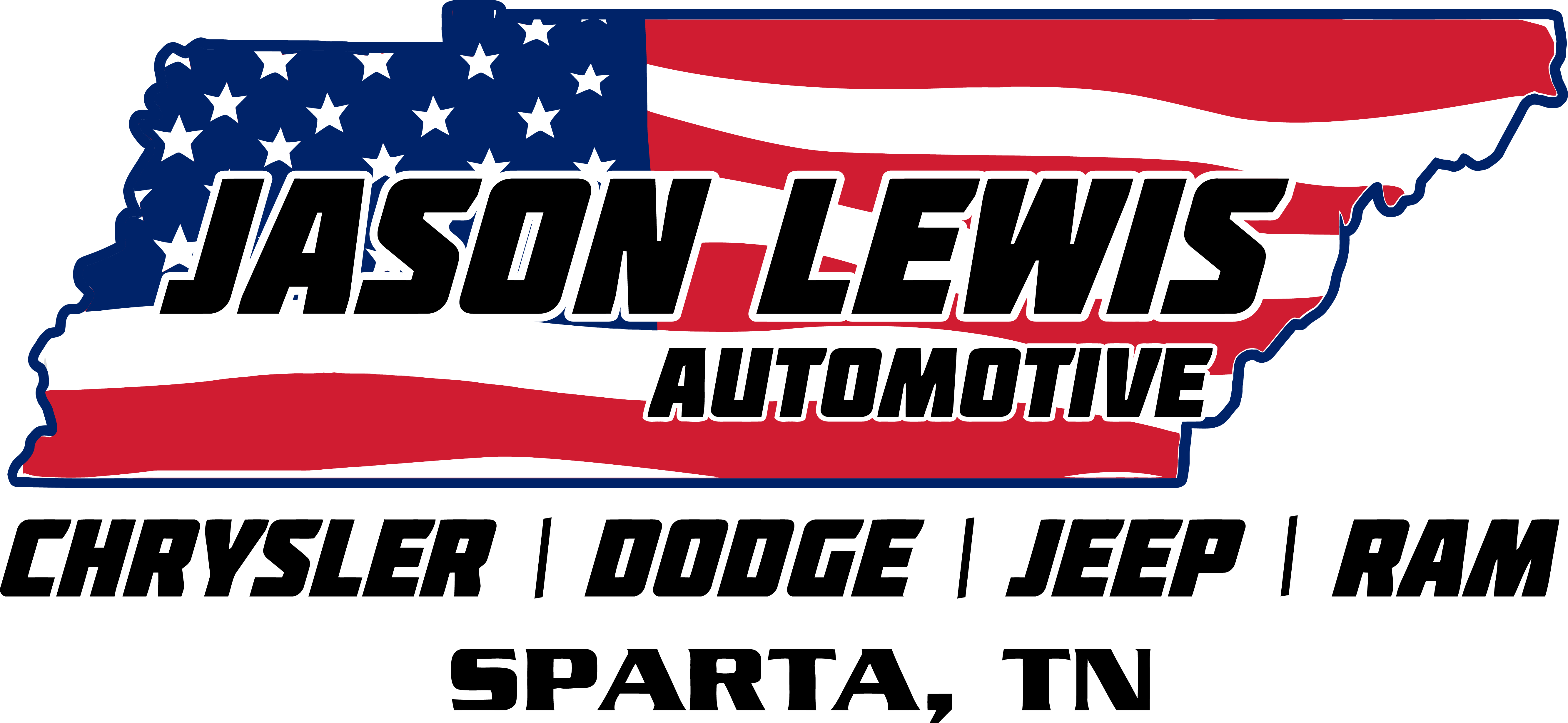Marusho
Active Member
- Joined
- Jun 22, 2018
- Messages
- 86
- Reaction score
- 122
- Points
- 33
- Age
- 81
I'M LENGTHENING THIS POST ON 20181002 WITH NEW INFORMATION FOUND IN THE DOCUMENT REFERENCED BY The_Chemist BELOW.
I cannot honestly say I am improving it, however.
I set out to compose this document thinking that the numbers were out there, somewhere. I have downloads of all the latest manuals and literature from
http://media.fcanorthamerica.com/newsroom.do?id=164&mid=69
I had to abandon the project. The primary source would have been the document "2019_Ram_SPECS.PDF", revised 8/28/2018 with a much longer name. At first glance it seems to be a proper document, but I am a detail-oriented person, and when I inspected it looking for my specific information, I discovered that it is disorganized, garbled, inaccurate and incomplete.
There is some useful information in it, to be sure, but the measurements sections are frustratingly useless.
Here is the problem, and probably the reason why the tech writer who was given this task, was in over its (awkward gender-neutral pronoun) head: For some purposes the measurements are easy to come by. The length, for example, is not affected by the drive type (2x4, 4x4). In some cases measurements are different between the Quad and Crew cabs, but specs like ground clearances are not affected. The dilemma is "how to organize the document when there are so many factors that can alter some measurements? The only proper way to do it would have resulted in a pretty long document, with sections devoted to each variant of the truck: Wheelbase, cab type, drive type, suspension type, off-road or not, Rebel or not, skid plates or not, etc. Even with these 7 criteria, there would be up to 128 sections. This is an ideal task for an interactive application, but not for a consumer document. I can understand why the employee given this task, was unable to compose a coherent document while keeping it to a reasonable length. That employee did not expect anyone to check it as thoroughly as I have done, and that employee's supervisor likely could not care less about the content as long as it looks good from 10 feet.
It gets worse. I don't even have to do any research to know that this document was in a standard FCA format, possibly carried over from several generations of products, and altered each year in a pro forma manner in a limited amount of time.
So, WHAT EXACTLY AM I ON ABOUT? Try this exercise: Find your truck's ground clearance, front and rear, being certain that you have found your wheelbase, cab type, drive type, suspension type, skid plates/not, Rebel/not. Ask yourself whether you believe the ground clearance really changes based on the air suspension setting. Find the height of your truck and try to determine if that is the maximum height or the height when the suspension is set to normal ride height. That's the sort of inquiries that will show you the reason I'm disappointed in this document.
This inquiry all started with my interest in the settings of the air suspension with and without the off-road package. People are reporting that they are surprised that they are missing Off-Road 2 with the off-road package. Looking at the latest manuals, it is easy to see why the confusion. The off-road package is NOT MENTIONED. If one assumes (always a mistake) that the words "Rebel Only" in the manuals refer, in fact to "Rebels and off-road-package only", then the confusion is cleared up. Sort of. The air suspension has a total travel of 4".
The non-off-road models have 5 positions: Entry/exit 0", Aerodynamic* 1.5.", Normal Ride Height 2", Off-Road 1 3", Off-Road 2 4". (These numbers vary in different sources.
The Rebel, and possibly the undocumented Off-road trucks, have 4 positions: Entry/exit 0", Aerodynamic* 2.5", Normal Ride Height 3", Off-Road 1 4". Note that the all-important entry/exit/cargo loading position seems to be the same with or without the off-road equipment. The Rebel, with 33" tires, should be .5" higher though.
* The air suspension enters aero mode at either 62-66 mph, or 35mph. The first figure is from the manuals, the second from an engineer in a video.
------------------------------------------------------------
At one time I found a document with clearances to the bottom of the door sill. I can no longer find that document. If you have any idea where I saw it, please tell me, as that document may answer some of my questions. Thank you The_Chemist, for locating this document, entitled "2019_Ram_1500_-_Engineering. pdf". If does have some interesting sentences, even if, as you will see below, I'm not impressed with the cited passage.
Here is the passage, from page 4 of 7:
* Normal Ride Height (NRH): 8.7 inches of clearance (measured from the base of the door sill) is the
default, load-leveled ride height
* Aero Mode: Lowers the vehicle 0.6 inches from NRH. Aero Mode improves fuel efficiency by up to one
percent and is activated by vehicle speed, adjusting for optimal performance and fuel economy
* Off-road 1: Lifts the vehicle 1.2 inches from NRH, reaching 9.1 inches of ground clearance, helping to
clear obstacles
* Off-road 2: Delivers more off-road capability, increasing ground clearance by 2 inches over NRH to 10.1
inches
* Park Mode: Lowers the vehicle 2 inches from NRH for easy entry/exit and cargo loading
Using the stated measurement of “8.7 inches of clearance to the base of the door sill” that would mean that the other 4 settings, measured in the same manner would be:
Park Mode (elsewhere known as Entry/Exit Mode): 6.7 inches.
Aero Mode: 8.1 inches.
Off-road 1: 9.7 inches, and not the 9.1 inches shown. (Or maybe 9.9 inches if you want to use the number "1.2").
Off-road 2: 10.7 inches, and not the 10.1 inches shown. (Or maybe 10.9 inches).
But wait! Could it be that only the NRH is being expressed as “clearance measured to the base of the door sill” (CBDS, AKA apples), while the other 4 figures refer to something called “plain old clearance" (POC, AKA oranges)?
This passage appears to refer to a generic Ram with any wheelbase, with or without 4wd, in any trim except Rebel, and not equipped with the Off-road Package.
I Googled the phrase “bottom of door sill” but got no relevant hits. Nevertheless we have a hint in the document about what was meant. In another passage, an advantage of the air suspension system is given as
* Lowest step-in height of 20.9 inches
If we reconcile this with the Entry/Exit Mode figure, as measured to the “bottom of door sill” of 6.7 inches, it’s clear that whatever the “bottom of door sill” is, we should look for it 14.2 inches below what you and I call the “door sill plate”.
While I don’t have a Ram to inspect, I think you and I can agree that the only thing 14.2 inches below the door sill is . . . air.
THERE IS EVEN MORE BELOW
I'm sorry this post turned out as such a hodge-podge. Who knew that such a straightforward task could be sodaunting impossible?
I cannot honestly say I am improving it, however.
I set out to compose this document thinking that the numbers were out there, somewhere. I have downloads of all the latest manuals and literature from
http://media.fcanorthamerica.com/newsroom.do?id=164&mid=69
I had to abandon the project. The primary source would have been the document "2019_Ram_SPECS.PDF", revised 8/28/2018 with a much longer name. At first glance it seems to be a proper document, but I am a detail-oriented person, and when I inspected it looking for my specific information, I discovered that it is disorganized, garbled, inaccurate and incomplete.
There is some useful information in it, to be sure, but the measurements sections are frustratingly useless.
Here is the problem, and probably the reason why the tech writer who was given this task, was in over its (awkward gender-neutral pronoun) head: For some purposes the measurements are easy to come by. The length, for example, is not affected by the drive type (2x4, 4x4). In some cases measurements are different between the Quad and Crew cabs, but specs like ground clearances are not affected. The dilemma is "how to organize the document when there are so many factors that can alter some measurements? The only proper way to do it would have resulted in a pretty long document, with sections devoted to each variant of the truck: Wheelbase, cab type, drive type, suspension type, off-road or not, Rebel or not, skid plates or not, etc. Even with these 7 criteria, there would be up to 128 sections. This is an ideal task for an interactive application, but not for a consumer document. I can understand why the employee given this task, was unable to compose a coherent document while keeping it to a reasonable length. That employee did not expect anyone to check it as thoroughly as I have done, and that employee's supervisor likely could not care less about the content as long as it looks good from 10 feet.
It gets worse. I don't even have to do any research to know that this document was in a standard FCA format, possibly carried over from several generations of products, and altered each year in a pro forma manner in a limited amount of time.
So, WHAT EXACTLY AM I ON ABOUT? Try this exercise: Find your truck's ground clearance, front and rear, being certain that you have found your wheelbase, cab type, drive type, suspension type, skid plates/not, Rebel/not. Ask yourself whether you believe the ground clearance really changes based on the air suspension setting. Find the height of your truck and try to determine if that is the maximum height or the height when the suspension is set to normal ride height. That's the sort of inquiries that will show you the reason I'm disappointed in this document.
This inquiry all started with my interest in the settings of the air suspension with and without the off-road package. People are reporting that they are surprised that they are missing Off-Road 2 with the off-road package. Looking at the latest manuals, it is easy to see why the confusion. The off-road package is NOT MENTIONED. If one assumes (always a mistake) that the words "Rebel Only" in the manuals refer, in fact to "Rebels and off-road-package only", then the confusion is cleared up. Sort of. The air suspension has a total travel of 4".
The non-off-road models have 5 positions: Entry/exit 0", Aerodynamic* 1.5.", Normal Ride Height 2", Off-Road 1 3", Off-Road 2 4". (These numbers vary in different sources.
The Rebel, and possibly the undocumented Off-road trucks, have 4 positions: Entry/exit 0", Aerodynamic* 2.5", Normal Ride Height 3", Off-Road 1 4". Note that the all-important entry/exit/cargo loading position seems to be the same with or without the off-road equipment. The Rebel, with 33" tires, should be .5" higher though.
* The air suspension enters aero mode at either 62-66 mph, or 35mph. The first figure is from the manuals, the second from an engineer in a video.
------------------------------------------------------------
At one time I found a document with clearances to the bottom of the door sill. I can no longer find that document. If you have any idea where I saw it, please tell me, as that document may answer some of my questions. Thank you The_Chemist, for locating this document, entitled "2019_Ram_1500_-_Engineering. pdf". If does have some interesting sentences, even if, as you will see below, I'm not impressed with the cited passage.
Here is the passage, from page 4 of 7:
* Normal Ride Height (NRH): 8.7 inches of clearance (measured from the base of the door sill) is the
default, load-leveled ride height
* Aero Mode: Lowers the vehicle 0.6 inches from NRH. Aero Mode improves fuel efficiency by up to one
percent and is activated by vehicle speed, adjusting for optimal performance and fuel economy
* Off-road 1: Lifts the vehicle 1.2 inches from NRH, reaching 9.1 inches of ground clearance, helping to
clear obstacles
* Off-road 2: Delivers more off-road capability, increasing ground clearance by 2 inches over NRH to 10.1
inches
* Park Mode: Lowers the vehicle 2 inches from NRH for easy entry/exit and cargo loading
Using the stated measurement of “8.7 inches of clearance to the base of the door sill” that would mean that the other 4 settings, measured in the same manner would be:
Park Mode (elsewhere known as Entry/Exit Mode): 6.7 inches.
Aero Mode: 8.1 inches.
Off-road 1: 9.7 inches, and not the 9.1 inches shown. (Or maybe 9.9 inches if you want to use the number "1.2").
Off-road 2: 10.7 inches, and not the 10.1 inches shown. (Or maybe 10.9 inches).
But wait! Could it be that only the NRH is being expressed as “clearance measured to the base of the door sill” (CBDS, AKA apples), while the other 4 figures refer to something called “plain old clearance" (POC, AKA oranges)?
This passage appears to refer to a generic Ram with any wheelbase, with or without 4wd, in any trim except Rebel, and not equipped with the Off-road Package.
I Googled the phrase “bottom of door sill” but got no relevant hits. Nevertheless we have a hint in the document about what was meant. In another passage, an advantage of the air suspension system is given as
* Lowest step-in height of 20.9 inches
If we reconcile this with the Entry/Exit Mode figure, as measured to the “bottom of door sill” of 6.7 inches, it’s clear that whatever the “bottom of door sill” is, we should look for it 14.2 inches below what you and I call the “door sill plate”.
While I don’t have a Ram to inspect, I think you and I can agree that the only thing 14.2 inches below the door sill is . . . air.
THERE IS EVEN MORE BELOW
I'm sorry this post turned out as such a hodge-podge. Who knew that such a straightforward task could be so
Last edited:











